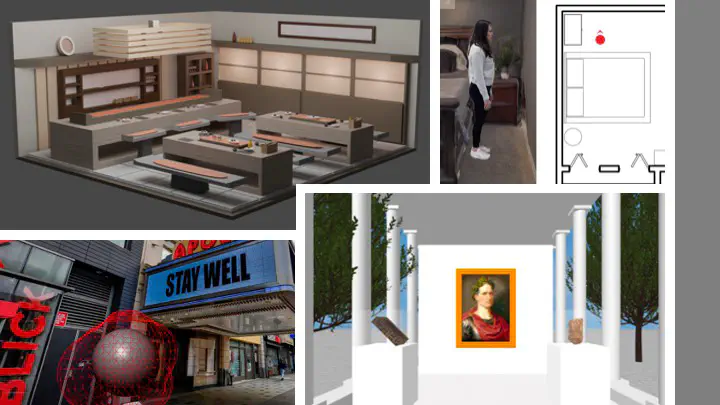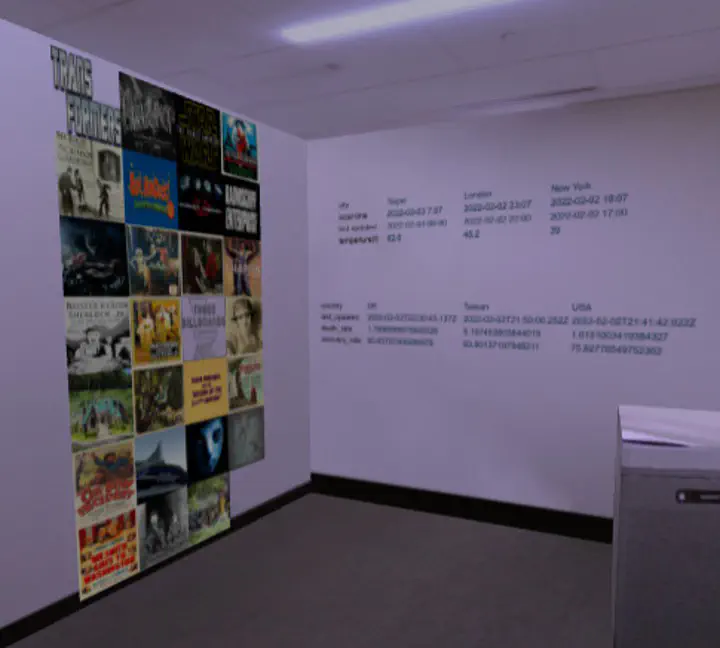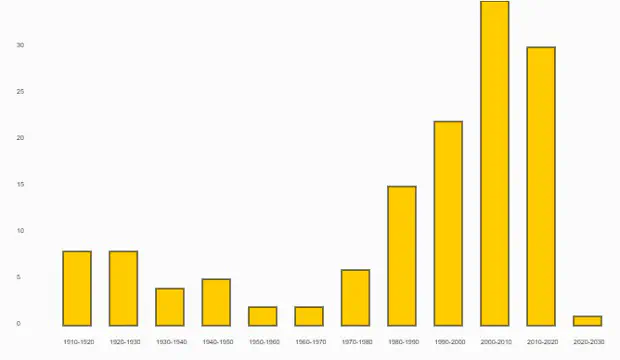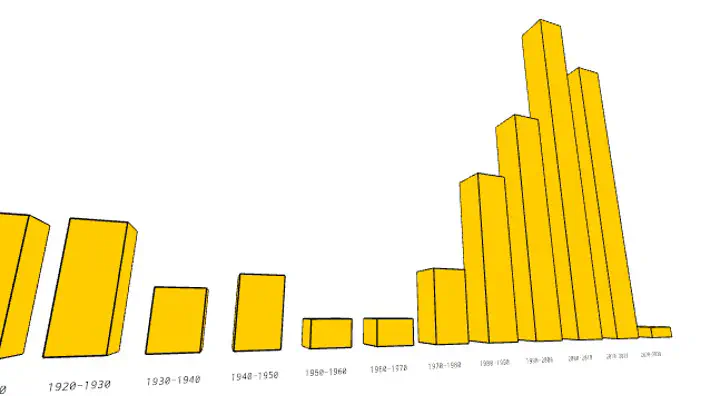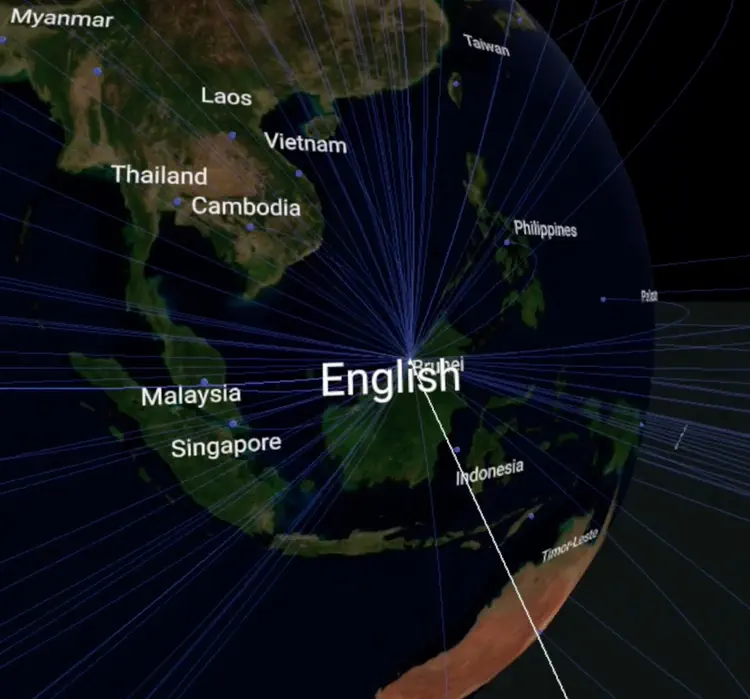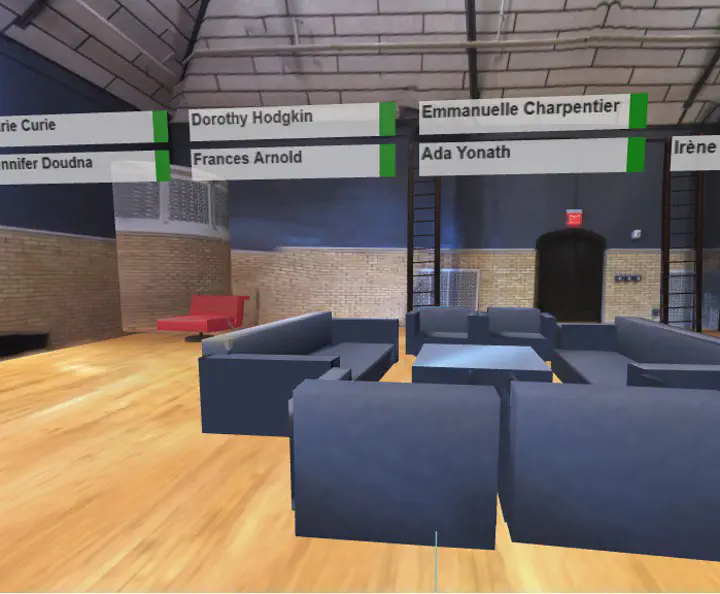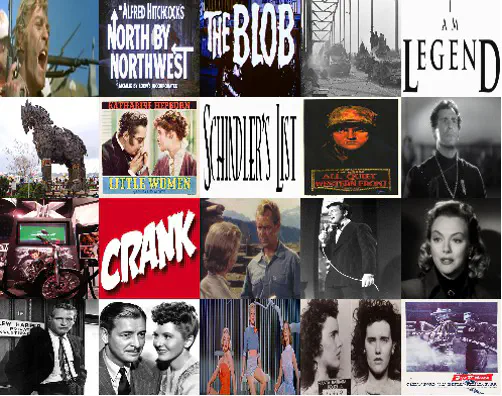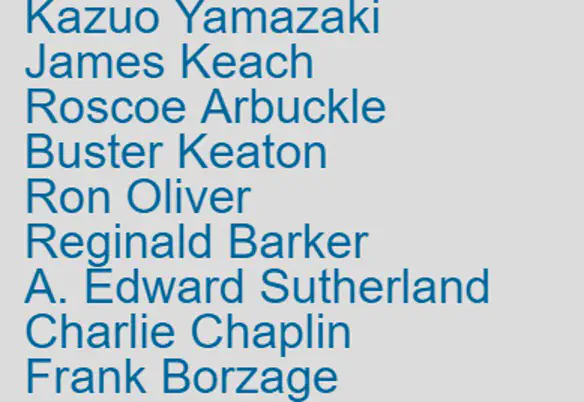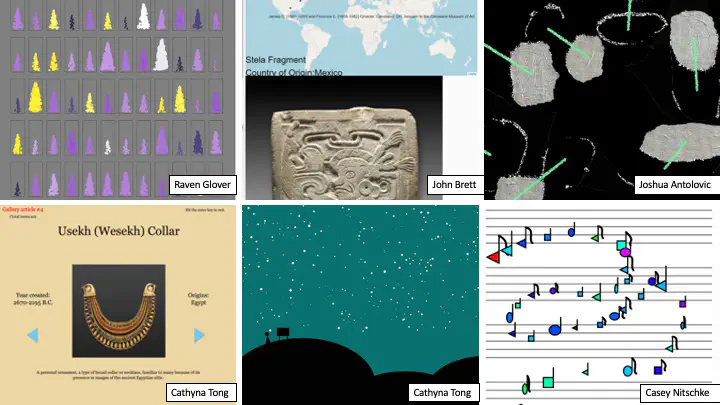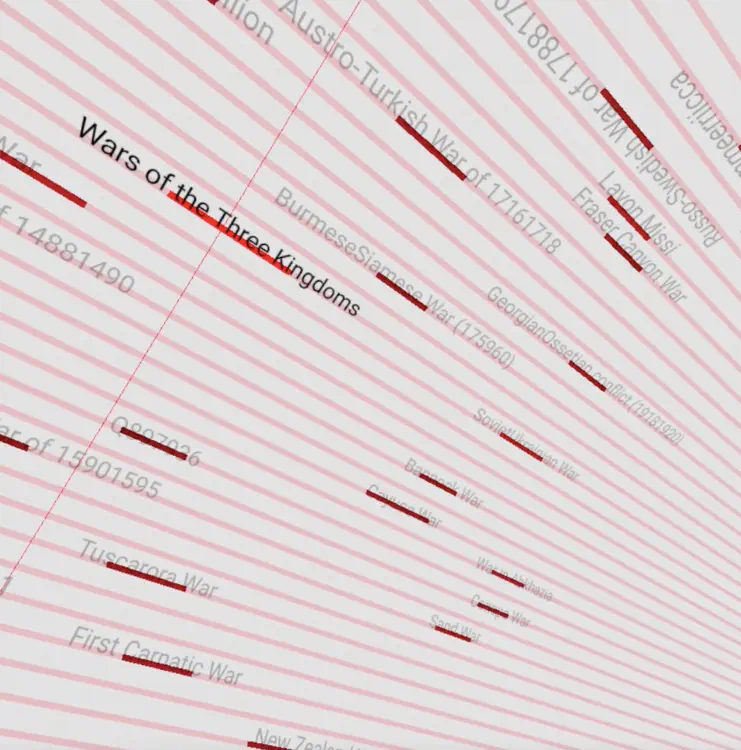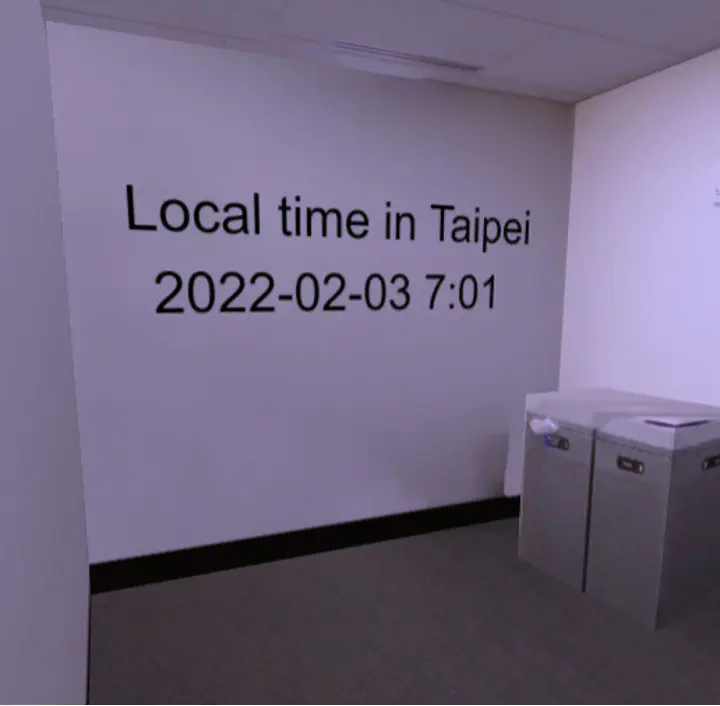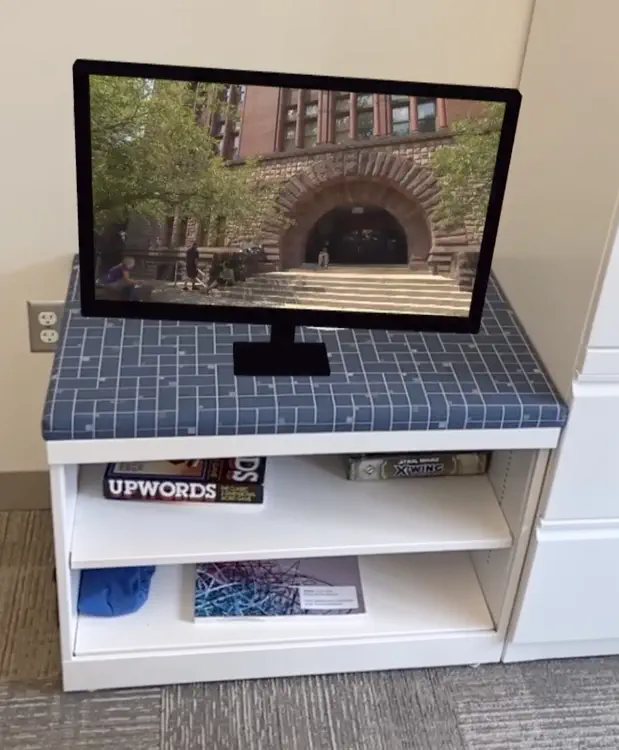Digital Humanities Prototyping
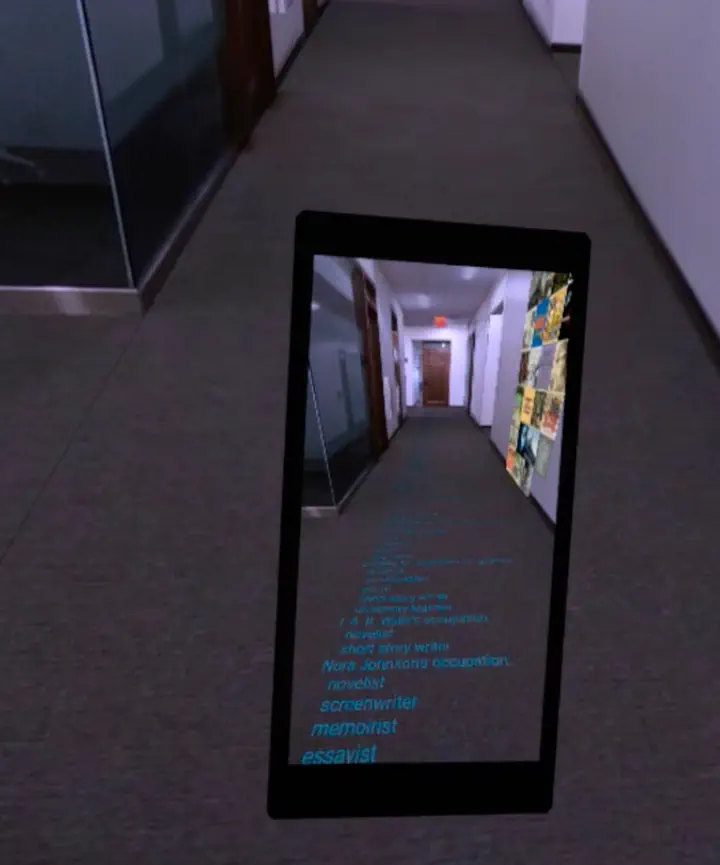
Last year, in collaboration with ACCAD and Design GRAs, we developed a process for students and researchers to acquire text, numerical, or image-based data on the humanities topics of their choice.
Wikidata, the structured data storage side of Wikipedia, was used as an accessible and vast source of humanities data. Documentation was created to show how to query data from Wikidata as CSV or JSON files that can then be used in visualizations.
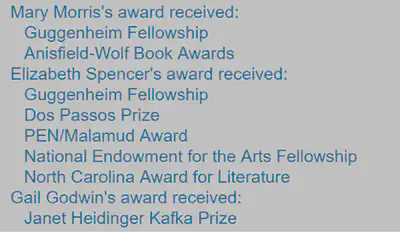
Programming examples were created to show ways that humanities data could be integrated into coding prototypes. These examples both provide code for simpler beginner tasks, and also provide more complex inspirational demonstrations. Some of these include visualizing connections between geographic locations and spoken languages, discovering connections between historic films (e.g., date, director, genre), walking through military conflict data on 3D timelines, and a “memory palace” for interactive spatial text arrangement. These are intended to be viewed immersively in VR.
Many of these digital humanities examples were also used as data sources for the the TDAI Data Art project. Prototypes were designed to provide students with examples of ways that different types of data could be virtually located and visualized, in diverse locations in Pomerene Hall (e.g., stretching text out on the carpet, placing bar graphs in the hall, pasting images on windows, or putting virtual monitors on tables and walls.)
Free and/or open-source web-based software was primarily used for data visualizations to improve ease of access and sharing for students and researchers. Software included: p5.js, A-Frame, three.js, and Glitch.
Class assignments were modified in a Design department Collaborative Studio as well as in ACCAD’s introductory programming class so that students could choose humanities topics of interest to them. Students then developed ideas for integrating their topics into the prototypes they were designing for class projects.
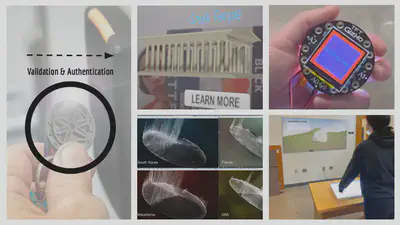
The linked documentation for acquiring humanities data, integrating it into software, and visualizing data with web-based VR and AR is being updated as our knowledge progresses.
This effort has been part of a larger initiative to support digital humanities (DH) research at OSU. The initiative has been a collaboration between OSU’s Library, ACCAD, and the Humanities Institute/Collaboratory.
(work in progress)
Graduate Students:
- Hsi-Yuan Chu (Design): programming, visualizations, images, videos
- Emily Subr (Design): wikidata documentation, TDAI environments, videos
Project support:
- An AU21 course release for Matt Lewis was funded by a “Centers and Institutes Grant” from the Global Arts and Humanities Discovery Themes (GAHDT) and ACCAD
- Hsi-Yuan Chu’s GRA time was provided by ACCAD
- Emily Subr’s GRA support funded by the Translational Data Analytics Institute (TDAI)
Additional images:
